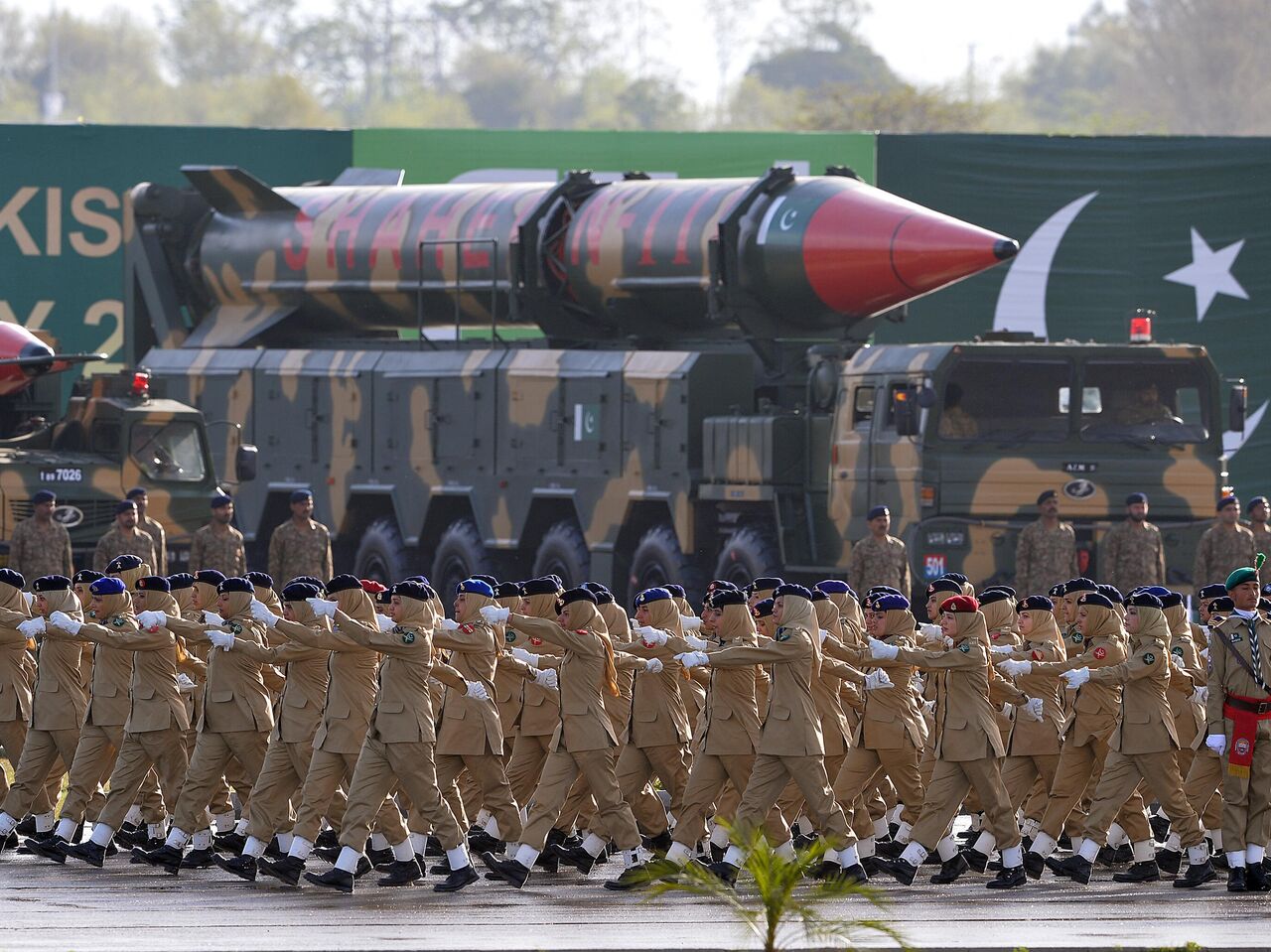U.S. Sounds the Alarm as Pakistan’s Ballistic Missile Program Grows More Advanced and Dangerous
This dire warning from senior U.S. security officials comes on the heels of Washington’s latest wave of sanctions against Pakistan’s ballistic missile program, aimed at crippling its continued weapons development.
(DEFENCE SECURITY ASIA) – Last December, a senior White House official delivered a chilling warning, branding Pakistan as an “escalating threat” to the United States. His concern? Islamabad’s relentless drive to develop long-range ballistic missiles—deadly weapons capable of striking far beyond South Asia, even reaching U.S. territory.
The official, former Deputy National Security Advisor Jon Finer, a key architect of America’s security strategy during Joe Biden’s adminstration did not mince words.
He sounded the alarm, warning that Pakistan’s missile technology is advancing at an alarming and unprecedented rate—faster, deadlier, and more sophisticated than ever before.
“If this trajectory continues,” he warned, “Pakistan will soon possess the capability to launch devastating strikes well beyond its region—including against the United States.”
With mounting urgency, Finer added, “Frankly, it is becoming impossible to see Pakistan’s missile development as anything other than a direct and growing threat to America.”
This dire warning from senior U.S. security officials comes on the heels of Washington’s latest wave of sanctions against Pakistan’s ballistic missile program, aimed at crippling its continued weapons development.

These sanctions target Pakistan’s state-owned defense agencies, which spearhead the country’s missile production.
According to U.S. officials, the move is a direct response to the “grave and persistent proliferation risk” posed by Pakistan’s aggressive pursuit of long-range missile capabilities.
But Islamabad has not taken these measures lightly. Outraged, Pakistan slammed the sanctions as “one-sided” and warned of serious consequences for regional stability.
Accusing Washington of blatant hypocrisy, Islamabad charged the U.S. with selectively turning a blind eye to other nations pursuing similar military advancements.
Pakistan’s Ministry of Foreign Affairs issued a scathing rebuke, condemning the U.S. for “double standards and discriminatory practices” that, it argues, “not only erode the credibility of global arms control regimes but actively endanger regional and international security.”
At the heart of the controversy lies Pakistan’s National Development Complex (NDC)—the powerhouse behind the country’s growing arsenal of long-range ballistic missiles.

Among its most formidable weapons is the Shaheen III, a cutting-edge ballistic missile touted as one of Pakistan’s most advanced and lethal strategic assets.
Fueled by solid propellant, the Shaheen III can carry both conventional and nuclear warheads with a terrifying range of 2,700 kilometers, making it the longest-range missile in Pakistan’s arsenal.
Pakistan reportedly began developing the Shaheen missile series in the early 2000s, and by 2014, the deadly weapon had officially entered the military’s strategic command.
This two-stage, solid-fueled missile, weighing a staggering 24,000 kilograms, can be armed with a 1,200-kilogram warhead and is guided with high-precision targeting technology, boasting a circular error probable (CEP) of just 350 meters—a dangerously small margin for error.
By 2017, U.S. intelligence estimated that Pakistan possessed at least 50 Shaheen-II and Shaheen-III missiles—but there is growing concern that this stockpile may have doubled, or even tripled, since then.
But Shaheen III is just one piece of the puzzle.

A far more ominous development is Pakistan’s secretive and highly sophisticated Ababeel ballistic missile program, which, if successful, will catapult the country into an elite club of nuclear-armed states possessing Multiple Independently Targetable Re-Entry Vehicle (MIRV) capabilities.
In October last year, Pakistan shook the global defense community when it successfully conducted the second test launch of its Ababeel medium-range ballistic missile.
What makes the Ababeel so terrifying? Unlike conventional missiles, this cutting-edge weapon can deliver multiple nuclear warheads to different targets at the same time—rendering traditional missile defenses useless.
With a range of 2,200 kilometers, the Ababeel missile gives Pakistan an unprecedented strategic advantage, allowing it to strike multiple enemy positions in a single, devastating blow.
Pakistan’s successful test of MIRV-capable weaponry puts it ahead of its arch-rival India in the regional arms race. While New Delhi has long been developing its own MIRV-equipped missiles, it has yet to match Pakistan’s rapid technological leap.
Islamabad has now positioned itself as the first South Asian nation to successfully test-launch an MIRV-capable missile, a move that shifts the region’s strategic balance and raises serious concerns in Washington, New Delhi, and beyond.

MIRV (Multiple Independently Targetable Re-Entry Vehicle) technology is one of the most fearsome advancements in modern warfare.
Unlike traditional ballistic missiles that carry a single warhead, MIRV-equipped missiles can unleash multiple nuclear warheads simultaneously, each targeting different locations across vast distances.
Only a handful of countries in the world possess this game-changing capability, including Russia, the United States, the United Kingdom, France, and China. Israel is also believed to have either developed or be in the final stages of acquiring MIRV technology.
If Pakistan succeeds in further developing the Ababeel missile, it will officially join the ranks of the world’s most advanced nuclear powers—an alarming prospect that could reshape global security dynamics.
With Pakistan pushing the boundaries of missile technology and the United States tightening its grip through sanctions, the escalating tensions signal a new era of uncertainty in global security.
As Islamabad accelerates its race toward advanced nuclear deterrence, and Washington ramps up efforts to contain its ambitions, the world watches with bated breath—wondering just how far this dangerous standoff will go.
— DEFENCE SECURITY ASIA




India &Pakistan both should developed long range missile and Fighter jet together.
America is Devil country. India and Pakistan should not care America.
I wish India Pakistan together again as 1947.
Who is America ?? Who is American ??
India and Pakistan both together again and fight with Devil America.
America is not our Friend.